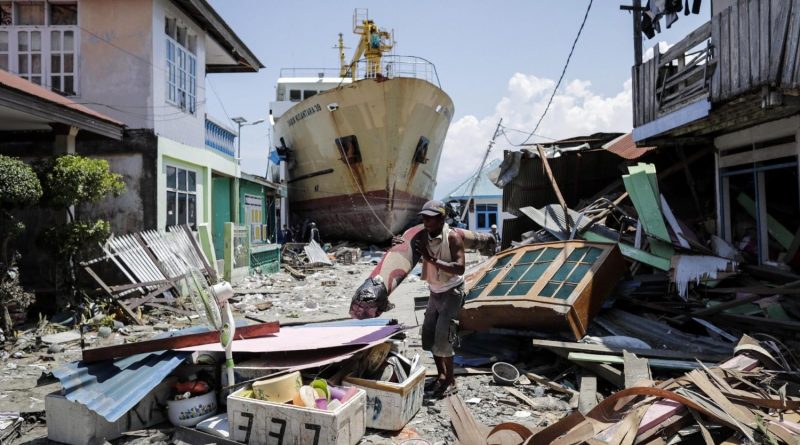Devastating Earthquake and Tsunami in Indonesia
By Kaitlin Principato
Staff Writer
On Friday, September 28, a 7.5 magnitude earthquake struck Indonesia, leaving at least 50,000 people displaced from their homes and at least 844 people dead. Following the earthquake, a tsunami was generated with waves reaching up to 20 feet. This flooded the pre-cracked streets, tore down buildings, and washed away homes on the island of Sulawesi.
As of that Monday, officials began burying hundreds of dead in a mass grave. As the Associated Press reports, 600 individuals have been wounded in the hospital and over 1,400 prisoners have fled jails across the nation.
Also noted by the Associated Press, Willem Rampangilei, chief of Indonesia’s National Disaster Mitigation Agency, said, “Burying must be done as soon as possible for health and religious reasons. Indonesia is majority Muslim, and religious custom calls for burials soon after death, typically within one day.”
Search-and-rescue teams combed destroyed homes and buildings, including a collapsed eight-story hotel, for any trapped survivors, but they needed more heavy equipment to clear the rubble. Poor infrastructure and unsophisticated technology have made it nearly impossible to rescue victims.
Jen Gelfand, head of Indonesia’s International Red Cross delegation, stated to CNN, “The Indonesian Red Cross is racing to help survivors, but we don’t know what they’ll find there. I don’t think we’ve quite seen the worst of things yet.”
Despite the catastrophe, people have not lost their patriotism. Adults and children of all ages painted their faces the red and white of the Indonesian flag as they stood in line for fuel, water, and food, reports CNN.
According to the Associated Press, this is not the most destructive natural disaster Indonesia has seen. In December of 2004, a 9.1 magnitude earthquake, followed by a powerful tsunami, hit Indonesia and killed more than 230,000 people in over a dozen countries.
As reports, disaster agency spokesman, Sutopo Purwo Nugroho, says the conditions are particularly devastating in the city of Palu because of liquefaction. This occurs when loose, water-filled soil near the surface loses its strength and collapses. The Indonesian government has repeatedly called for urgent assistance of all types from any actors in the international community.
According to SBS News, the Indonesian government’s head of investment, Tom Lembong, said, “Dozens of aid agencies and NGOs lined up to provide life-saving assistance, and the government struggled to come to terms with the sheer scale of the disaster.”
Both the European Union and South Korea have offered a combined $2.7 million in aid relief. China, the United States, and Australia also offered aid in the form of food, water, tents, generators, and medical staff. Indonesian President Joko Widodo visited the region Sunday afternoon, urging a continuous effort to rescue all who can be saved.


